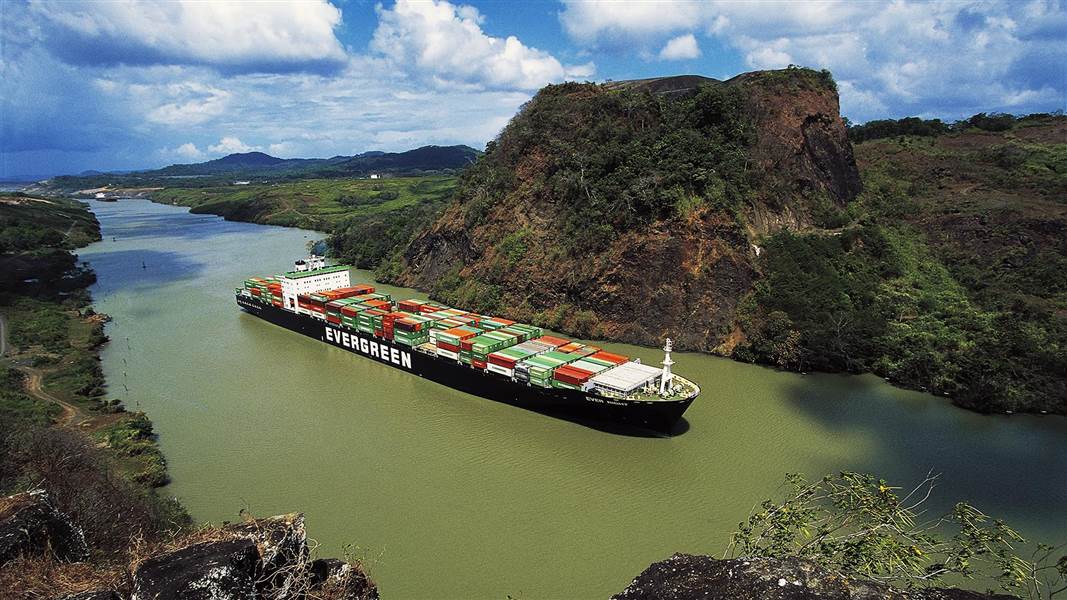Wednesday, January 31, 2018
With 2017 marking the first full year since the $5-billion expansion of the Panama Canal, shipments of LPG and LNG combined marked one of the largest uses of the enhanced waterway, Juan B. Sosa, consul of Panama and president and CEO of the U.S.-Panama Business Council, said Jan. 9, 2018, and as reported by S&P Global Platts. 
The transport of LPG and LNG cargos, largely from ports along the U.S. Gulf Coast to markets in Asia, has had a “tremendous impact” on the total volume of cargos transiting through the canal in the past year, Sosa said, speaking at a joint meeting of the American Petroleum Institute and the American Association of Drilling Engineers in Houston.
The number of transits by LPG tankers nearly doubled from 449 in fiscal year 2016 to 876 in 2017, while the number of transits by LNG tankers jumped to 163 from 17 over the period, according to data from the Panama Canal Authority. Together, there were 1039 transits of LPG and LNG in fiscal 2017, placing the combined total fourth in line behind containerized cargo ships at 2493 transits, dry-bulk vessels at 2915, and chemical tankers at 1959.
Sosa said the increased traffic in petroleum-related products is a direct result of the expansion of the canal, which was completed in June 2016 and allows the locks to now accommodate the much larger tankers that have become the international standard for shipments of LPG, LNG, and other petroleum products. Prior to its expansion, the canal could only accommodate Panamax vessels of up to about 80,000 deadweight tons (DWT) and a draft of less than 39.5 feet. However, with the widening of the locks and other improvements, the waterway can now accommodate the Aframax class of vessels, which can carry 120,000 DWT and make up about 80% of the global LNG fleet.
One result of the expansion has been to increase the volume of trade for ports along the U.S. Gulf Coast, particularly the Texas coast, as a result of the region’s importance as a hub for the petrochemical, LPG, and LNG export industries. Sosa included the greater Texas coastal region’s Sabine Pass, just over the Texas-Louisiana border and home to Cheniere Energy’s LNG export terminal, currently the only LNG export facility in the Lower in the Lower 48 states.
“The location of Houston is a tremendous asset,” Sosa said, noting that Texas is Panama’s No. 1 trading partner. Not only does the Texas coast offer access to the Port of Houston and the Houston Ship Channel, but the greater coastal region boasts several other deep-water ports, such as Freeport and Corpus Christi, which can accommodate the larger vessels now able to transit through the canal, he said, adding, “No state has more deep-water ports than Texas.” As evidence of the expected growth in the region’s international trade, Sosa pointed to an ExxonMobil announcement last spring that the integrated oil and gas company planned to invest $20 billion in building up its petrochemical operations in the Gulf Coast region. The bulk of that investment is expected to be put toward ramping up the export of U.S.-sourced petrochemicals to Asia via the Panama Canal. “This also opens the door for the ports of Freeport, Port Arthur, and Sabine Pass,” Sosa said. The Panama Canal forms a hub of global maritime trade, with 144 trade routes traveling through the waterway serving some 1700 ports worldwide, including 85 direct destinations in Europe and the Americas.
The U.S. is by far the most active user of the canal, accounting for about 68% of transits. China is a distant second, accounting for 18% of all canal business.
(SOURCE: The Weekly Propane Newsletter, January 29, 2018)

The transport of LPG and LNG cargos, largely from ports along the U.S. Gulf Coast to markets in Asia, has had a “tremendous impact” on the total volume of cargos transiting through the canal in the past year, Sosa said, speaking at a joint meeting of the American Petroleum Institute and the American Association of Drilling Engineers in Houston.
The number of transits by LPG tankers nearly doubled from 449 in fiscal year 2016 to 876 in 2017, while the number of transits by LNG tankers jumped to 163 from 17 over the period, according to data from the Panama Canal Authority. Together, there were 1039 transits of LPG and LNG in fiscal 2017, placing the combined total fourth in line behind containerized cargo ships at 2493 transits, dry-bulk vessels at 2915, and chemical tankers at 1959.
Sosa said the increased traffic in petroleum-related products is a direct result of the expansion of the canal, which was completed in June 2016 and allows the locks to now accommodate the much larger tankers that have become the international standard for shipments of LPG, LNG, and other petroleum products. Prior to its expansion, the canal could only accommodate Panamax vessels of up to about 80,000 deadweight tons (DWT) and a draft of less than 39.5 feet. However, with the widening of the locks and other improvements, the waterway can now accommodate the Aframax class of vessels, which can carry 120,000 DWT and make up about 80% of the global LNG fleet.
One result of the expansion has been to increase the volume of trade for ports along the U.S. Gulf Coast, particularly the Texas coast, as a result of the region’s importance as a hub for the petrochemical, LPG, and LNG export industries. Sosa included the greater Texas coastal region’s Sabine Pass, just over the Texas-Louisiana border and home to Cheniere Energy’s LNG export terminal, currently the only LNG export facility in the Lower in the Lower 48 states.
“The location of Houston is a tremendous asset,” Sosa said, noting that Texas is Panama’s No. 1 trading partner. Not only does the Texas coast offer access to the Port of Houston and the Houston Ship Channel, but the greater coastal region boasts several other deep-water ports, such as Freeport and Corpus Christi, which can accommodate the larger vessels now able to transit through the canal, he said, adding, “No state has more deep-water ports than Texas.” As evidence of the expected growth in the region’s international trade, Sosa pointed to an ExxonMobil announcement last spring that the integrated oil and gas company planned to invest $20 billion in building up its petrochemical operations in the Gulf Coast region. The bulk of that investment is expected to be put toward ramping up the export of U.S.-sourced petrochemicals to Asia via the Panama Canal. “This also opens the door for the ports of Freeport, Port Arthur, and Sabine Pass,” Sosa said. The Panama Canal forms a hub of global maritime trade, with 144 trade routes traveling through the waterway serving some 1700 ports worldwide, including 85 direct destinations in Europe and the Americas.
The U.S. is by far the most active user of the canal, accounting for about 68% of transits. China is a distant second, accounting for 18% of all canal business.
(SOURCE: The Weekly Propane Newsletter, January 29, 2018)




